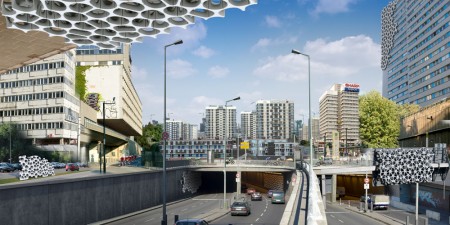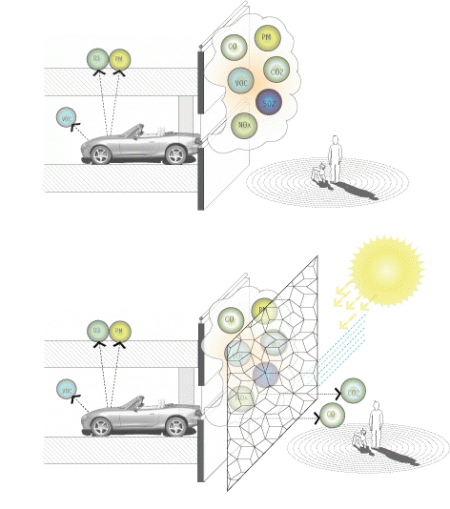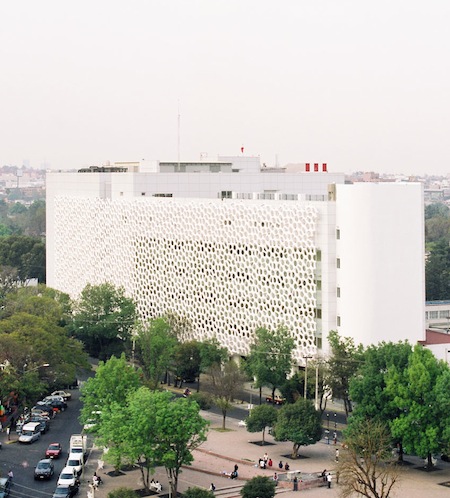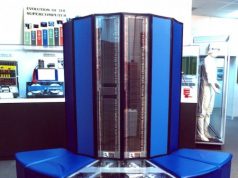Elegant Embellishment’s Carbon-Eating Designs

Beijing photo by James Fallows
Until we come to our collective senses and say goodbye to fossil fuels, there will be smog—lots of it judging by the photo above. The hope for a clean economy may be a pipe dream, but that doesn’t mean urbanites have to give up on the idea of clean, breathable air.
A Berlin company has an answer to urban smog, and like many innovative products design thinking is turning problems into opportunities. Welcome to the Prosolve370e-inspired city.

Prosolve370e’s technology uses titanium dioxide to “de-pollute” the city. Here is how they describe it:
prosolve370e is a decorative architectural tile that can effectively reduce air pollution in cities when installed near traffic ways or on building facades.
The tiles are coated with a superfine titanium dioxide (TiO2), a pollution-fighting technology that is activated by ambient daylight. Employing a unique configuration of this technology, the tiles neutralize air pollutants when sited near traffic or densely polluted conditions.
As a modification to existing architectural surfaces, prosolve370e essentially “tunes buildings” to respond better to their immediate environments . . .
The tiles are coated with a superfine titanium dioxide (TiO2), a pollution-fighting technology that is activated by ambient daylight. This is the nano photocatalytic version of conventional TiO2 commonly used as pigment and already known for its self-cleaning and germicidal qualities. It requires only small amounts of naturally occurring UV light and humidity to effectively reduce air pollutants into harmless amounts of carbon dioxide and water.
When positioned near pollution sources, the coated tiles break down and neutralize NOx (nitrogen oxides) and VOCs (volatile organic compounds) directly where they are generated.

1–Combustion engines emit harmful toxins such as NOx and VOCs while running.
2–A photocatalytic screen positioned between cars and people traps and filters harmful by-products of combustion engines.
The technology is real.
Manuel Gea González Hospital in Mexico City has just installed 2,500 square metres of the product. That much of the crystalline shaped solution scrubs the CO2 equivalent of 9,000 cars every day. And one coating last for up to ten years. Let’s figure that out. 9,000 x 365 x 10 = 32,850,000. That means over the lifespan of this product, one installation will absorb the pollutants equivalent to the daily exhaust of thirty-two million cars. One installation.
Not only is it functional, it’s crystalline form is attractive as well.

Inspired? Take a look at other city-changing technologies at MESH Cities’ solution site and also download the MESHCities iPhone App.







